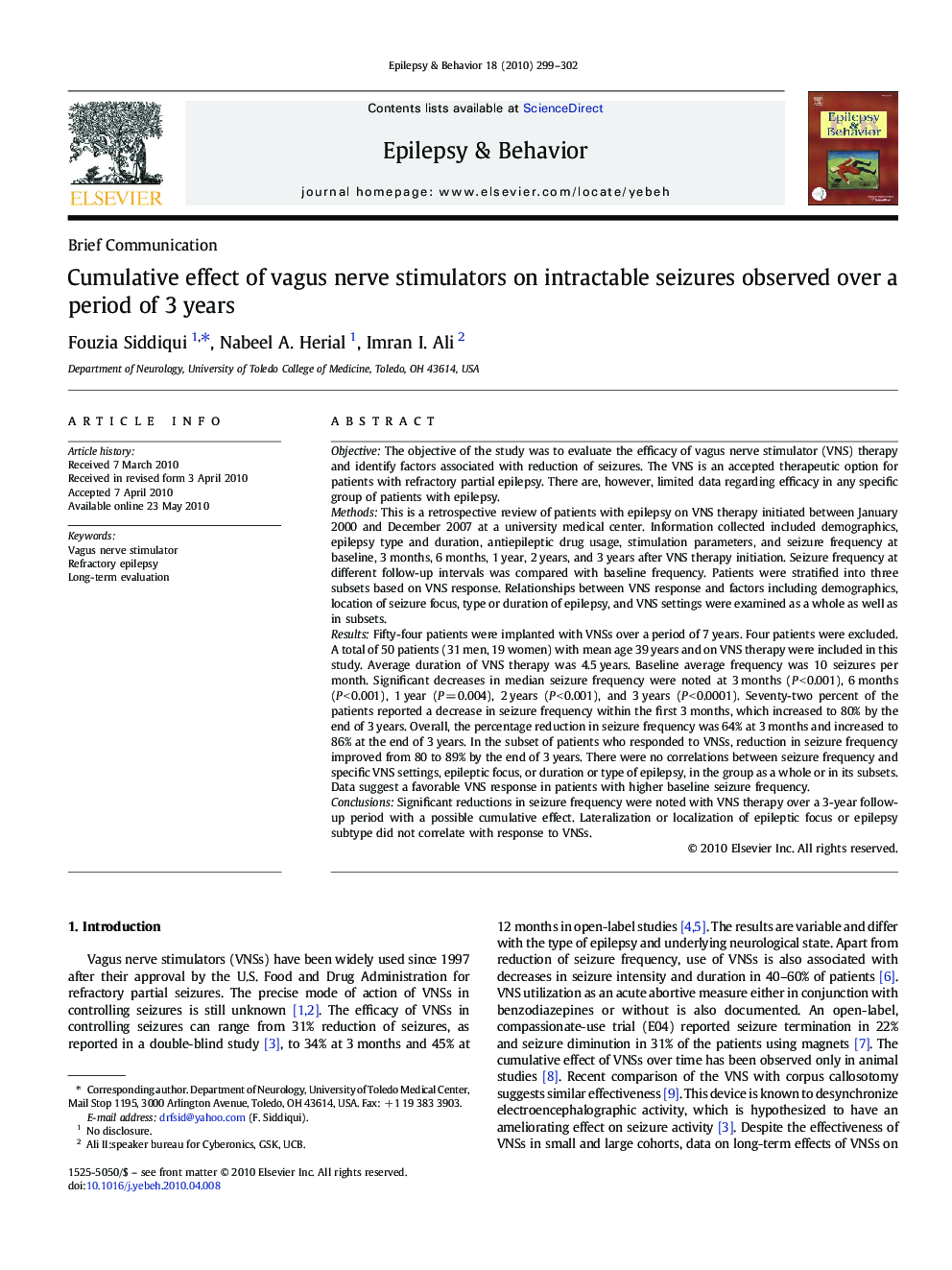| کد مقاله | کد نشریه | سال انتشار | مقاله انگلیسی | نسخه تمام متن |
|---|---|---|---|---|
| 3050455 | 1185952 | 2010 | 4 صفحه PDF | دانلود رایگان |

ObjectiveThe objective of the study was to evaluate the efficacy of vagus nerve stimulator (VNS) therapy and identify factors associated with reduction of seizures. The VNS is an accepted therapeutic option for patients with refractory partial epilepsy. There are, however, limited data regarding efficacy in any specific group of patients with epilepsy.MethodsThis is a retrospective review of patients with epilepsy on VNS therapy initiated between January 2000 and December 2007 at a university medical center. Information collected included demographics, epilepsy type and duration, antiepileptic drug usage, stimulation parameters, and seizure frequency at baseline, 3 months, 6 months, 1 year, 2 years, and 3 years after VNS therapy initiation. Seizure frequency at different follow-up intervals was compared with baseline frequency. Patients were stratified into three subsets based on VNS response. Relationships between VNS response and factors including demographics, location of seizure focus, type or duration of epilepsy, and VNS settings were examined as a whole as well as in subsets.ResultsFifty-four patients were implanted with VNSs over a period of 7 years. Four patients were excluded. A total of 50 patients (31 men, 19 women) with mean age 39 years and on VNS therapy were included in this study. Average duration of VNS therapy was 4.5 years. Baseline average frequency was 10 seizures per month. Significant decreases in median seizure frequency were noted at 3 months (P < 0.001), 6 months (P < 0.001), 1 year (P = 0.004), 2 years (P < 0.001), and 3 years (P < 0.0001). Seventy-two percent of the patients reported a decrease in seizure frequency within the first 3 months, which increased to 80% by the end of 3 years. Overall, the percentage reduction in seizure frequency was 64% at 3 months and increased to 86% at the end of 3 years. In the subset of patients who responded to VNSs, reduction in seizure frequency improved from 80 to 89% by the end of 3 years. There were no correlations between seizure frequency and specific VNS settings, epileptic focus, or duration or type of epilepsy, in the group as a whole or in its subsets. Data suggest a favorable VNS response in patients with higher baseline seizure frequency.ConclusionsSignificant reductions in seizure frequency were noted with VNS therapy over a 3-year follow-up period with a possible cumulative effect. Lateralization or localization of epileptic focus or epilepsy subtype did not correlate with response to VNSs.
Journal: Epilepsy & Behavior - Volume 18, Issue 3, July 2010, Pages 299–302